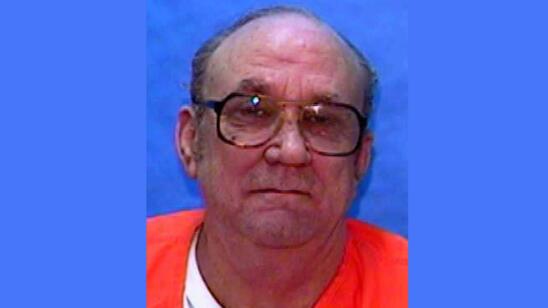The following content contains disturbing accounts of violence against children. Discretion is advised.
Be it verbal assaults or physical attacks, bullying is a traumatic act. While bullying can occur at any age, childhood bullying can be particularly harmful. Such bullying is considered an adverse childhood experience (ACE) for young victims, the bullies themselves and even for witnesses. ACEs can negatively impact a child’s brain development, personal interactions and mental and physical health, with the effects enduring into adulthood.
Aside from the emotional pain and physical injury it causes, bullying among kids can also result in death. Young bullies have murdered their victims. Bullying at school has also led to some victims lashing out and killing.
Bullies Who Kill
Canadian teenager Reena Virk grew up feeling like an outsider. She clashed with her parents, who stood out as Jehovah’s Witnesses in their majority-Sikh South Asian community. Virk also yearned for acceptance from her classmates. Instead, teenage bullies killed her.
[Stream episodes of Kids Behind Bars: Life or Parole in the A&E app.]
In November 1997, 14-year-old Virk was with a group of kids hanging out under a bridge. There, a girl extinguished a lit cigarette on Virk’s forehead. Seven girls and a boy then beat her. When Virk tried to leave, two of her attackers followed. Kelly Ellard, 15, and Warren Glowatski, 16, hit Virk again, then drowned her in a nearby body of water.
On September 16, 2019, 13-year old Diego Stolz, an orphan living with his aunt and uncle, was attacked by two classmates at his school in Moreno Valley, California. Their punches made Stolz fall and hit his head on a pillar. He died days later due to head trauma.
Devan Selvey, 14, was killed on October 7, 2019, after enduring intense bullying since starting high school in September. That day, a group of kids pursued Selvey on the grounds of his school in Toronto, Canada. As Selvey was near his mother’s van—he’d called her for help—a 14-yearold stabbed and killed him.
The bullying at Selvey’s school wasn’t a surprise to his family. When his sister had attended the same institution a decade earlier, she’d also been a target.
Ellard and Glowatski, Virk’s killers, were convicted of second-degree murder. Other Virk attackers were found guilty of assault causing bodily harm. The two teens who caused Stolz’s death were sentenced to probation and 150 hours of community service for involuntary manslaughter. Selvey’s killer was tried as a youth and pleaded guilty to second-degree murder.
He was sentenced to four years in custody, the maximum for a young offender under Canadian law.
How Schools Respond to Bullying
The judicial system takes over when bullying results in injury or death. But before this point, it’s usually up to school officials to respond.
The School Crime Supplement to the National Crime Victimization Survey states that 22 percent of students between the ages of 12 and 18 said they’d experienced bullying at school in 2019.
“All the states, at this point, have some kind of bullying law,” Elizabeth Jaffe, a professor at John Marshall Law School, tells A&E True Crime. “The problem is the schools aren’t enforcing them the way they should be.”
“From what I understand, the schools are very reluctant to contact the police. They try to deal with it on their own,” Jaffe says. “They don’t want the publicity that goes with it.” She adds that schools may be concerned about potential liability.
Jessie Klein, an associate professor of sociology at Adelphi University and the author of Bullying: A Reference Handbook, tells A&E True Crime that suspension is often a school’s only available response to bullying. “Instead, they do nothing because they don’t have anything else in their toolbox,” Klein says. “I hear one kid after another say, ‘My school did nothing.’ And then they feel unsafe.”
When Bullying Victims Kill
According to Klein, when bullying goes unchecked, kids can “end up feeling like they have to handle everything on their own.”
On June 18, 2014, 14-year-old Noel Estevez used a kitchen knife to fatally stab Timothy Crump, also 14, outside their New York City middle school. Crump was a former friend of Estevez’s who had been bullying him for months after the two fought about a missing cellphone. After original murder charges were downgraded, Estevez was charged with second-degree manslaughter as a juvenile.
In September 2017, Abel Cedeno, 18, stabbed two of his New York City classmates with an illegal switchblade he’d bought online. One died from the attack. Cedeno said he’d been tormented for years because he was gay. When students began throwing broken pencils and balls of paper at him that day, he lashed out, though the students he stabbed hadn’t been the ones who’d bullied him.
Cedeno was convicted of manslaughter, for which he received 14 years in prison, and assault, for which he received eight years. (The sentences would run concurrently.)
Klein says the trauma of bullying can contribute to victims committing violent acts—whether to their tormentors or to others.
On August 2, 1993, Eric M. Smith, then 13, took 4-year-old Derrick Robie into an isolated area in the small town of Savona, New York. Smith proceeded to beat, strangle and sexually abuse Robie. Smith was convicted of second-degree murder. At a 2021 parole hearing, he said classmates had bullied him for “my ears, my glasses, being short, my red hair.” Smith stated he killed Robie because he himself “became the bully I disliked.”
Klein believes that Smith’s history of being bullied could have been a factor behind his violent actions.
How to Better Combat Bullying
Bullying continues to be a problem in and out of schools. Along with in-person bullying, the school crime survey also cites that in 2019, 16 percent of students in grades 9 through 12 were targeted by cyberbullies. These kinds of bullies use digital devices and/or social media to taunt and torment victims.
Jaffe says when it comes to cyberbullying, the legal system is “failing to address what’s a systemic problem.”
In a 2021 Wayne Law Review article, she wrote, “Though there is variation among the states in the degree of protections granted to victims of cyberbullying, there is a broad and all-encompassing protection afforded to the companies that give cyberbullies a platform to harass.”
Klein feels the solution is to create “a community where kids feel compelled to support one another rather than to turn against one another.”
“I think that would carry over to social media,” she says.
StopBullying.gov’s recommendations to counter bullying in schools include social-emotional learning and trauma-informed practices. Klein supports these approaches.
Today, Klein says, “There’s no love in most school social environments. It’s really something of a war zone.”
For anti-bullying resources and more, visit StopBullying.gov.
Related Features
Is There a Minimum Age for Being a Murderer?
The Offenders Behind 3 Court Cases That Changed Lifetime Imprisonment Laws for Juveniles


